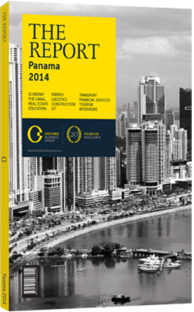Renewable vows: Regulatory reforms are encouraging the rise of sustainable sources
The stated ambitions to diversify Panama’s energy matrix have resulted in a range of regulatory reforms to encourage investment in renewables, and ground has been broken on the first projects in wind- and solar-driven generation facilities. After a decade of feasibility studies in cooperation with international development organisations such as the Global Environment Facility and the UN Development Programme, 2011 saw the first issue of wind energy tenders. As of February 2014, nine new wind generation licences were approved and 15 provisional wind power generation licences were under review by the National Public Services Authority, which regulates the sector.
Wind
The most advanced of these concessionaires is Spain’s Unión Eólica Panameña (UEP), which is overseeing the construction of four wind parks with a combined capacity of 337 MW. In 2012 UEP started work on Panama’s first wind farm near the city of Penonome, in the central Coclé Province. The project, valued at $450m, will feature 88 wind turbines with a capacity to generate a total of 220 MW, equal to 6-7% of annual energy demand. With the first turbine completed by the end of June 2013, UEP was well on track to deliver the project by the end of 2014. In addition to Penonome, the company plans to develop another 130 MW-worth of wind farms. At present UEP holds concessions for projects La Rosa de los Vientos (102 MW), Nuevo Chagres (169 MW), Marañón (18 MW) and Portobelo (48 MW), and is in the process of securing a wind generation licence for Cerro Azul (40.8 MW).
Solar
Other operators include Spain’s Fersa, which oversees the Anton and Toabré parks at respective capacities of 105 MW and 225 MW, and local player Helium Energy Panama, which owns the Escudero (50 MW) and Viento Sur (150 MW) parks. Although less advanced than wind, solar energy is considered a key contributor to Panama’s diversifying energy mix. In August 2012 Empresa de Generación Eléctrica, the only fully state-owned generating firm, started work on the country’s first solar plant in Sarigua National Park in Puerto Limon de Parita in Herrera Province. According to the company, the first of two equal phases, scheduled to come on-line in 2014, will comprise 11,886 solar panels with an installed capacity of 2.4 MW.
Besides its contribution to the national grid, solar energy offers an interesting proposition for rural electrification. As such, the Rural Electrification Agency allocates up to $7m annually for the acquisition and installation of solar panels destined for remote areas.
A third main strand in the country’s renewables race is biofuels. Similar to other countries in the region, ethanol has taken front stage here, benefitting from a legal mandate stipulating a gradually rising ethanol blend in fuel, reaching 10% by April 2016.
Incentives
To encourage investment and pull first movers over the line, the government has introduced a series of incentives since 2004. For wind-driven facilities of up to 10 MW, no distribution or transmission costs are charged, and they are exempt from import and income taxes for the first 10 years of commercial operation. For bigger capacities, similar incentives exist with the exception of exemption from distribution charges in most cases. The government also subsidises up to 5% of direct costs of projects, and allows for sales of up to 15% to any distribution company or the spot market. The efforts seem to be paying off, as the government’s expectations of wind’s contribution have regularly been revised upwards, from 60 MW pre-2011 to the current levels of 150 MW-450 MW by 2017.
Meanwhile, Law 37 of June 10, 2013 stipulates a range of fiscal incentives for the construction and operation of small solar-run installations, while distributors are obliged to buy all available power generated from biomass, such as that from agricultural waste and residues from ethanol feedstock, supplied to the grid.
Though modest so far, the potential medium- to long-term contribution of renewables to installed generation capacity is not to be underestimated. As the first commercial operations come on-stream, the story of the roll-out of Panama’s renewables is one to follow.
You have reached the limit of premium articles you can view for free.
Choose from the options below to purchase print or digital editions of our Reports. You can also purchase a website subscription giving you unlimited access to all of our Reports online for 12 months.
If you have already purchased this Report or have a website subscription, please login to continue.

